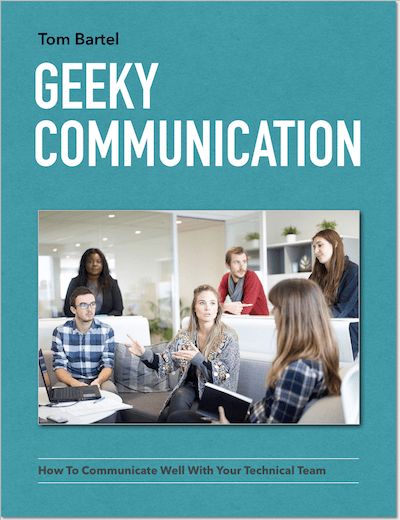TL;DR: If you do not have a lot of time to prepare for a one-on-one, try to get at least five minutes. During these five minutes, review your notes, think about the person and their team, and potentially about personal growth. Lists of tried and tested one-on-one questions can help.

I believe that one-on-ones should be an essential part of a department’s communication structure. They help to detect upcoming issues early. They are a good opportunity to build rapport with your colleagues. They are good for giving and asking for feedback in a safe environment. They are great for developing ideas. In short, they have a lot of unique strengths that are hard to emulate through other forms of communication, and therefore they deserve thoroughness and diligence both in preparation and in follow-up.
However, busy as we are, it can be hard to put a lot of time into preparation. If you are responsible for many people, and you have several one-on-ones back to back, you can probably not devote your entire day to the preparation and follow-up of these conversations. Since I had more than 20 direct reports at one point — which is too much, but, you know, these things happen, and I heard from Meri Williams that she once had about 80 — I gradually developed a preparation method that takes about five minutes, and still can add a lot of value to the upcoming conversation.
1st minute: Review notes
I take notes in every one-on-one and keep them in a document that is shared between my employee and me. Now, it is not like every single entry is necessarily super valuable in the moment I write it. However, you might be surprised how much you can forget in a week or two. Reading this entry some time later can get you back in the context, without having to ask repetitive questions. In case there is a long-time issue, you can then pick up right where you left off last time. Were there any follow-ups or action items? Have they been taken care of?
Also, the entire history of previous notes can remind you of things you have forgotten, and might allow you to spot certain patterns. It can be very interesting to read your meeting notes from six or twelve months ago. For example, your employee might already have talked to you about being interested in a slightly different role several months ago, but it was all a bit vague, and you quickly forgot about it. But over the last weeks, it kept coming up again, in shorter and shorter intervals. This is a pretty clear sign that you have tested your employee’s patience enough by now, and that it’s about time you worked towards a solution.

Or, you are about to give someone critical feedback because of performance issues. You realize you have done so before, but you don’t quite remember when, or how often. Consulting your notes, you notice that it has been going on for way too long already, without much improvement. Again, time to take further steps.
If you are really pressed for time, skim over the notes from the previous one or two one-on-ones for one or two minutes. It’s not ideal, but it should remind you of the most salient topics regarding this employee, so your brain can do some pre-loading before the meeting starts.
2nd minute: Think about the person
After reviewing the notes from one or two previous conversations, I lean back and think about the person I am about to have the one-on-one with. What is the impression I currently get from her? Does she seem confident and does she seem to know what she is doing? Or does she need some guidance? Does she look happy and engaged, or does she look sad? Does she need feedback? Is there something I should tell her that I haven’t? How has she behaved lately? Was there any surprising or special event that calls for a follow-up?
For example, if somebody just recently became a father, I might expect him not to obsess over things at work, because there are more important things in his life at that moment. He also might be a little tired. This could be a good opportunity to take a step back together, look at the big picture, and build some rapport.
Or, if the employee had a dispute with somebody else during a meeting, and showed conflict-promoting behaviour that should be changed, then the one-on-one could be a good time for feedback. Remember, though, that good feedback must refer to something not very long ago.
On each of the topics that I identify during this thinking process, I note down one or two keywords in my notebook. That way, I won’t forget about them during the one-on-one.
3rd minute: Think about the current context of the team / department / company
After thinking about the person, I widen my thinking scope to the organizational levels she is a member of: The team, the department, or the entire company. What is the current situation of the team? Are they performing at a high level and shipping regularly? Or do they have trouble delivering, and ship only rarely? Do the team members openly exchange ideas, or is everybody working for themselves?
For example, maybe a team got a new product owner recently, whom you do not know very well yet. It might be interesting and useful to know how well this new product owner collaborates with the team. Or, maybe one team member is on parental leave, so that the team is one developer down. We should actively look for early warning signs of stress and overwork due to this personnel situation, and our one-on-ones are a good time to do that.
Thinking beyond the employee’s immediate team, is there something going on or upcoming in the department that is potentially unsettling? For example, I was in the middle of development process changes several times, and usually, people want to know what their team lead or manager really thinks about the change, and if they should expect more change. Vice versa, I want to know what they think about the change. Developers who spend a lot of time worrying about things going on around them will not be very productive. Therefore, if my employee does not bring up a topic, then I will. This way, I can assess what the effect of the change is on an individual contributor level.
For future changes that you can still influence, one-one-ones are great for collecting opinions in a quiet and safe environment. Use your employees as a sounding board and get their ideas. This way, their acceptance and engagement are probably higher once the change is implemented.
4th minute: Personal development
Continuous learning is a must in the tech industry, so you should, from time to time, encourage your people to acquire new knowledge and skills. If you have recently done this, ask the employee how it is going, and if they need anything in addition. Maybe they want to demonstrate what they have learnt, or how they are making process with a side project. Maybe you can go over some of their code and you give your opinion on it.
If people have been working in the same role or project for a long time, you might think about changes in role or responsibility together. Is the employee happy with her role? Does she want to move to a new one? Is she interested in more responsibility? In mentoring? In improving the onboarding program? In project management? In recruiting? In preparing the next all-hands meeting? If you give it some thought, you will probably be able to identify many such special tasks that might be interesting for some people. Everyone has individual interests, strengths, and weaknesses, and it will serve you well to tailor responsibilities around the interests and strengths.
Usually, you would not talk about personal development in every single one-on-one. Once a quarter might be enough. Some people reserve one entire meeting every two or three months exclusively for learning goals and career conversations. Find out what works best for you.
5th minute: Skim question list
I find it helpful to get ideas from a list of tried and tested one-on-one questions. Of course, not all of the questions are necessarily helpful with every employee, or at any point in time. But using such a list reduces the chance of forgetting to ask about about certain things for too long. For example, you probably would not talk about manager improvement every time, and ask questions like “Would you like more or less direction from me on your work?” or “What is something I could do better?”. However, doing it every few months is probably a good idea.
If you have a set of questions that you find yourself using a lot in one-on-ones, put the questions on a list, and expand the list over time. Make it easily accessible so that you can quickly call it up. If steps one to four yield already so much to talk about that it’s unlikely you can handle it all in a single one-on-one, step five can of course be skipped.
And you’re off…

Now it’s probably about time you were heading to your one-on-one, so hurry up! Being on time shows that you care and take this reserved time serious (I have to admit, I often fail at that). Of course, this five-minute schedule is idealized, and should be adapted on a case-by-case basis. Sometimes, you will want to put some additional thought into the person herself, sometimes on the team. At other times, reviewing the previous notes might take up the entire five minutes of preparation. That is fine. You will probably not be perfectly prepared after these five minutes anyway. Focus on the most important areas, and maybe you reach these notorious 80% of value in 20% of the time.
Since you are pressed for time, you will also want to keep the follow-up short. There is another five-minutes technique for that, go check it out. Also, if you have comments on my ideas or an alternative way to prepare, please share your ideas in the comment section below.
Time investment
This blog post took me about 3.5h to compose.
Want to learn more on communication? Check this out:

Yours free: An ebook on effective communication!
Get Geeky Communication absolutely free, and learn about effective communication in a technical environment. Just enter your email address below. No spam ever, guaranteed.
 I'm Tom Bartel, Germany-based software developer, engineering manager, speaker, and human communication geek. More
I'm Tom Bartel, Germany-based software developer, engineering manager, speaker, and human communication geek. More